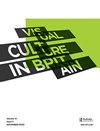Modern Painters, Old Masters: The Art of Imitation from the Pre-Raphaelites to the First World War, by Elizabeth Prettejohn, New Haven, CN and London: Yale University Press, 2017, pp. 288, £45, Hardback
Q2 Arts and Humanities
引用次数: 0
Abstract
In 1895, the painter and critic (and cousin of the writer, Robert Louis Stevenson) R.A.M. Stevenson published a book in which he explored Velásquez as a truly modern artist. Stevenson interpreted Velásquez’s technique through the lens of Impressionism, and referenced his fin-desiècle contemporaries as Impressionist revivalists. In the midst of Elizabeth Prettejohn’s discussion of the significance of Spanish Old Masters for Frederic Leighton in both his Royal Academy lectures and many of his most substantial paintings, Stevenson’s views signal Prettejohn’s own focus on how time, memory, imitation, and influence are at work in British art history. She notes that for Stevenson, ‘Impressionism as an artistic movement is thus projected back to Velásquez as its initiator, and its modern manifestation becomes a “revival”, like the Pre-Raphaelite revival of early Renaissance painting, rather than a modernist break with the past’ (183). This insight invites new readings of late nineteenth-century historicism, fruitfully complicating narratives of modernism that characterize the art-historical scholarly landscape on both sides of the English Channel. By exploring questions of reference, allusion, and the deployment of the history of art as a flexible tool in the production of new paintings, it is not only possible but deeply right to probe what links might truly exist between Lawrence Alma-Tadema, John Singer Sargent, and Pablo Picasso. For artists, as well as for nineteenth-century curators, scholars, and collectors, it was essential and truly modern to establish meaningful relationships with Old Masters as no less than anachronic partners in innovative paintings that delivered truly new messages regarding subjects as diverse as love, God, literature, archaeology, and colour. Prettejohn’s Modern Painters, Old Masters contends that, from the midnineteenth century until well into the twentieth, British art’s relationships with Old Master European painting were a precious resource for the production of radically original work. From Ford Madox Brown to William Orpen, artists turned again and again to the glorious riches of the Italian Renaissance and to Spanish early modernism, many of which were readily accessible for lengthy and nuanced study in a growing array of regional public art galleries and national collections, as well as in prints and watercolour studies (230). Quoting David Hume’s Georgian rhetorical question, ‘Must we throw aside the pictures of our ancestors, because of their ruffs and farthingales?’ at the outset of her project, Prettejohn responds with a firm and appealing negative. For the artists《现代画家,老大师:从拉斐尔前派到第一次世界大战的模仿艺术》,伊丽莎白·普雷特约翰著,中国纽黑文和伦敦:耶鲁大学出版社,2017年,第288页,45英镑,精装本
1895年,画家兼评论家(也是作家罗伯特·路易斯·史蒂文森的堂兄)R.A.M.史蒂文森出版了一本书,在书中他探索了贝拉斯克斯作为一位真正的现代艺术家的身份。史蒂文森通过印象派的视角解读了贝拉斯克斯的技巧,并将他的同时代人称为印象派复兴主义者。在伊丽莎白·普雷特约翰(Elizabeth Prettejohn)在皇家学院(Royal Academy)的讲座和他许多最重要的画作中讨论西班牙老大师对弗雷德里克·雷顿(Frederic Leighton)的意义时,史蒂文森的观点表明了普雷特约翰自己对时间、记忆、模仿和影响在英国艺术史上的作用的关注。她指出,对史蒂文森来说,“印象派作为一场艺术运动,因此被投射到了作为其发起人的贝拉斯克斯身上,其现代表现形式变成了一种“复兴”,就像文艺复兴早期绘画的拉斐尔前派复兴,而不是现代主义与过去的决裂”(183)。这一见解引发了对19世纪末历史主义的新解读,使现代主义叙事富有成果地复杂化,成为英吉利海峡两岸艺术历史学术景观的特征。通过探索参考、影射和艺术史作为新绘画创作中灵活工具的运用等问题,我们不仅有可能而且非常正确地探究劳伦斯·阿尔玛·塔德马、约翰·辛格·萨金特和巴勃罗·毕加索之间可能真正存在的联系。对于艺术家,以及19世纪的策展人、学者和收藏家来说,与老大师建立有意义的关系是至关重要的,也是真正现代的,因为他们在创新绘画中是不亚于历史的合作伙伴,传递了关于爱、上帝、文学、考古和色彩等主题的真正新信息。Prettejohn的《现代画家,老大师》认为,从19世纪中期到20世纪,英国艺术与老大师欧洲绘画的关系是创作激进原创作品的宝贵资源。从Ford Madox Brown到William Orpen,艺术家们一次又一次地转向意大利文艺复兴时期的辉煌财富和西班牙早期现代主义,其中许多都很容易在越来越多的地区公共美术馆和国家收藏中,以及在版画和水彩画研究中进行漫长而细致的研究(230)。引用大卫·休谟的格鲁吉亚反问:“我们必须把我们祖先的照片放在一边吗?因为他们的痞子和屁?”在她的项目开始时,Prettejohn以坚定而吸引人的否定回应。对于艺术家
本文章由计算机程序翻译,如有差异,请以英文原文为准。
求助全文
约1分钟内获得全文
求助全文
来源期刊

Visual Culture in Britain
Arts and Humanities-Visual Arts and Performing Arts
CiteScore
0.60
自引率
0.00%
发文量
1
 求助内容:
求助内容: 应助结果提醒方式:
应助结果提醒方式:


